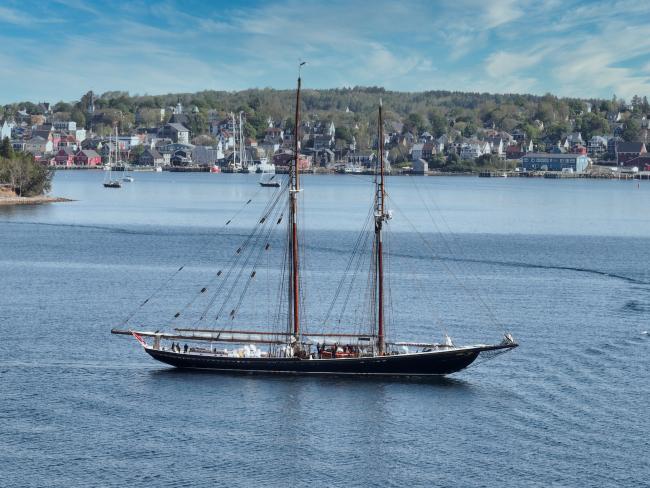Inspections and Safety Training
What an incredible week in Nova Scotia history. It’s strange when you look back at disasters in Nova Scotia: the August Gales, the Westray Mine disaster, hurricanes Juan or Fiona. They all happen quickly; 24-48 hours and things are generally resolved leaving communities to pick up and somehow carry on. On a ship, we look for the wind to begin to change or the barometer to rise, showing the storm isn’t over but it is passing. With the fires, it seems to carry on and on as affected communities are unable to really understand the loss and the rest of us try to grasp the work being done on the front lines. From our little schooner we send our deepest sympathies to those who have suffered loss and a hope for better days ahead for all Nova Scotians.
We had a big week here on the ship. With sails finally bent on we turned our attention to training the crew for emergency response. You may remember that earlier in the spring the crew attended a Marine Emergency Duties course. With an instructor from NSCC Shelburne, the crew were taught how to respond to various emergencies and how to use the equipment. With an imminent inspection and the prospect of going to sea, we have begun to train the crew with a particular Bluenose flavour. We have drilled for fires, collisions, people in the water, casualties that need evacuation and we have practiced our standardized responses for each, repeatedly. The crew can now recover a person in the water in four minutes from a standing start. They can don their survival suits in under two minutes and have practiced gathering passengers to get into their life rafts. It’s a lot to train and it’s even more to learn — yet we do it time after time, year after year. Bluenose II has been training young people to be responsible and to respond to emergencies for sixty years.
Friday was the culmination of our training and preparation as our inspector from ABS attended the vessel to witness our drills. The American Bureau of Shipping (ABS) is a classification society that has their own standards to apply and acts as Transport Canada representatives.
To make a long story short, an ABS inspector comes aboard and witnesses our safety drills as well as anchoring, which we usually do for lunch. Having a meal with the inspector allows the mates and I to learn about the commercial side of the sailing world and to hear of any changes that might be heading our way. It’s a good way for the junior officers to learn about the exchange of information between inspectors and the ship. Beside drills, the inspector also looks at our personal certificates and examines the certificate book for the ship. The ship’s registration, tonnage certificates, safety equipment register, even our anchor chain certificate is examined and questioned. The inspector signs a document certifying that we meet all the applicable regulations, and we are safe to go to sea. It’s a tremendous responsibility for the inspector. I certainly treat the moment of his signature and stamp with some reverence and to be honest, a great deal of relief.


